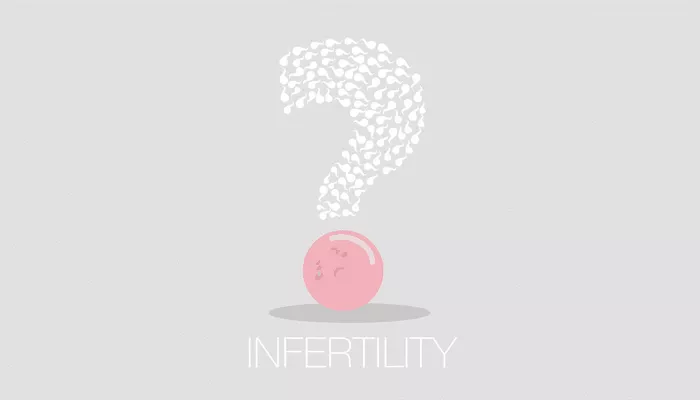Endometriosis is a chronic medical condition that affects millions of people worldwide. It occurs when tissue similar to the lining of the uterus grows outside the uterus, commonly involving the ovaries, fallopian tubes, and the pelvic lining. The most common symptoms of endometriosis include pelvic pain, heavy menstrual bleeding, and painful periods. However, the condition can sometimes cause unexpected symptoms, including chest pain. The relationship between endometriosis and chest pain is not widely known, and many people are surprised to learn that this condition can potentially affect organs and structures outside the pelvic region, including the chest. This article explores how endometriosis can cause chest pain, the potential mechanisms behind this phenomenon, and what patients can do to manage it.
Understanding Endometriosis
To understand how endometriosis can lead to chest pain, it is important first to grasp what the condition entails. Endometriosis is a condition where tissue resembling the uterine lining (endometrium) grows in areas where it doesn’t belong. This can include the ovaries, fallopian tubes, the outer surface of the uterus, and other organs within the pelvis. In rare cases, endometrial-like tissue can also grow in other parts of the body, including the diaphragm and the lungs.
As these endometrial implants grow and respond to hormonal changes during the menstrual cycle, they can cause inflammation, pain, and sometimes scarring. The tissue in these outlying areas behaves similarly to the tissue in the uterus—thickening, breaking down, and bleeding each month. However, the blood has nowhere to exit the body, leading to irritation, swelling, and pain.
While endometriosis primarily affects the pelvic organs, it can sometimes cause symptoms in other areas, including the chest. In this article, we will explore how this occurs and why chest pain may be a symptom of the condition.
How Does Endometriosis Affect the Chest?
1. Endometriosis and the Diaphragm
The diaphragm is the muscle that separates the chest from the abdomen and plays a key role in breathing. In some cases, endometrial-like tissue can implant on the diaphragm. This is known as thoracic or diaphragmatic endometriosis. When the tissue grows on the diaphragm, it can cause irritation and inflammation, leading to chest pain. This pain may be felt as sharp or stabbing and is often worse during menstruation, when the endometrial tissue responds to hormonal fluctuations.
The chest pain associated with diaphragmatic endometriosis can be aggravated by deep breathing, coughing, or certain movements. Some people describe the pain as similar to the discomfort experienced during a pulled muscle, although the underlying cause is related to the endometrial implants on the diaphragm.
2. Endometriosis and the Lungs
While rare, endometriosis can also affect the lungs. This is known as pulmonary or lung endometriosis. In this form of the condition, endometrial-like tissue implants on the lung lining, pleura, or even inside the lungs. Pulmonary endometriosis can cause chest pain, shortness of breath, and in some cases, coughing up blood. This type of endometriosis is more commonly seen in people with severe cases of the condition and may be linked to other symptoms such as hemoptysis (coughing up blood).
Chest pain from pulmonary endometriosis can vary in intensity. It may worsen during the menstrual cycle, just as pelvic endometriosis-related pain does. The pain may be accompanied by difficulty breathing, coughing, or a feeling of tightness in the chest.
3. Endometriosis and Nerve Involvement
Endometriosis may also cause chest pain due to the involvement of nerves. The condition can lead to the irritation of nerves in and around the chest wall, which may cause discomfort or pain. This can happen if endometrial tissue implants on areas of the body that are close to nerves responsible for sensation in the chest.
Nerve involvement can lead to a variety of pain experiences, including a dull ache, sharp pains, or even a sensation of pressure in the chest. The pain might be intermittent or constant, and it may be aggravated by certain movements, deep breaths, or physical activity.
Symptoms of Chest Pain Related to Endometriosis
When chest pain occurs as a result of endometriosis, it may present in different ways. The intensity, duration, and type of pain can vary depending on the individual and the specific areas affected. Here are some common characteristics of chest pain associated with endometriosis:
Sharp or Stabbing Pain
Many individuals with diaphragmatic or pulmonary endometriosis report sharp or stabbing pain in the chest, which often worsens during their menstrual cycle. This pain can be localized to the chest area and may increase with physical activity, coughing, or deep breathing.
Pain that Worsens with Menstruation
Chest pain caused by endometriosis is often cyclical. Just as pelvic pain tends to intensify around the time of menstruation, chest pain may follow a similar pattern. This is because the hormonal changes during the menstrual cycle stimulate the endometrial tissue to react, causing inflammation, bleeding, and pain. For people who experience chest pain from endometriosis, the timing of the pain may coincide with their period.
Difficulty Breathing or Coughing
When endometriosis affects the lungs, chest pain may be accompanied by other respiratory symptoms. Shortness of breath, a sensation of tightness in the chest, or difficulty breathing may occur. Some individuals may also experience a persistent cough or even cough up blood, although this is rare. These symptoms can make chest pain more concerning and may prompt further investigation by a healthcare provider.
Intermittent or Persistent Pain
The pain associated with endometriosis can be either intermittent or persistent. Some people may experience sporadic episodes of chest pain that occur only around their menstrual cycle. Others may have more constant discomfort that lingers even after their period ends. The intensity of the pain can also fluctuate depending on the severity of the endometrial implants.
Diagnosing Chest Pain from Endometriosis
Diagnosing chest pain caused by endometriosis can be challenging because the condition is relatively rare in the chest area. It is important for healthcare providers to consider the possibility of endometriosis when evaluating a patient with unexplained chest pain, particularly if the patient has a history of pelvic endometriosis or related symptoms.
Imaging Studies
To identify endometrial implants in the chest, healthcare providers may use imaging studies such as ultrasound, CT scans, or MRI. These imaging techniques can help identify abnormalities in the diaphragm, lungs, or chest wall. In some cases, a chest X-ray may also be used to rule out other causes of chest pain, such as infections, lung conditions, or cardiovascular issues.
Laparoscopy
In some cases, the definitive diagnosis of endometriosis may require a surgical procedure called laparoscopy. During this procedure, a small camera is inserted through a small incision in the abdomen to visually inspect the pelvic organs and surrounding areas. If endometrial tissue is found in the chest, a biopsy may be performed to confirm the diagnosis. Laparoscopy is generally used when other diagnostic tests are inconclusive.
Managing Chest Pain Caused by Endometriosis
While chest pain related to endometriosis can be distressing, there are treatment options available to help manage the condition. The treatment approach will depend on the severity of the symptoms and the specific areas affected.
Hormonal Treatments
Since endometriosis is hormone-dependent, managing hormone levels is often a key component of treatment. Hormonal therapies such as birth control pills, hormonal IUDs, and GnRH agonists can help regulate menstrual cycles and reduce the growth and activity of endometrial tissue. By reducing the inflammatory response, these treatments may help alleviate chest pain associated with the condition.
Surgical Options
For people with severe endometriosis, surgery may be recommended to remove endometrial implants. If the chest is affected, the surgeon may attempt to remove or destroy the endometrial tissue in the diaphragm or lungs. Surgery can be effective in reducing symptoms and preventing further complications.
Pain Management
For those experiencing chest pain, pain management strategies are important. Nonsteroidal anti-inflammatory drugs (NSAIDs), such as ibuprofen, may be used to reduce pain and inflammation. In some cases, more specialized pain management techniques, such as nerve blocks or physical therapy, may be considered.
Conclusion
Endometriosis is a complex condition that can affect various parts of the body, including the chest. While chest pain is not the most common symptom of endometriosis, it is a potential manifestation of the condition, especially when endometrial tissue affects the diaphragm or lungs. If you experience chest pain, especially in conjunction with other symptoms of endometriosis, it is important to consult a healthcare provider for a proper diagnosis. With appropriate treatment, individuals with endometriosis-related chest pain can often find relief and improve their quality of life.
Related topics:
How Can I Reduce the Size of My Varicocele?

























